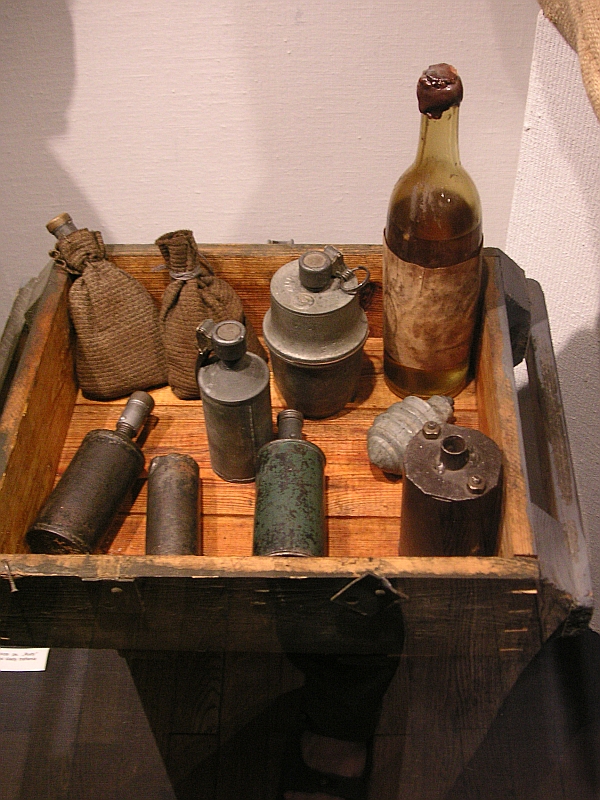Satchel Charge on:
[Wikipedia]
[Google]
[Amazon]

 A satchel charge is a
A satchel charge is a
 A satchel charge is a
A satchel charge is a demolition
Demolition (also known as razing and wrecking) is the science and engineering in safely and efficiently tearing down buildings and other artificial structures. Demolition contrasts with deconstruction (building), deconstruction, which inv ...
device, primarily intended for combat
Combat (French language, French for ''fight'') is a purposeful violent Conflict (process), conflict between multiple combatants with the intent to harm the opposition. Combat may be armed (using weapons) or unarmed (Hand-to-hand combat, not usin ...
, whose primary components are a charge of dynamite
Dynamite is an explosive made of nitroglycerin, sorbents (such as powdered shells or clay), and Stabilizer (chemistry), stabilizers. It was invented by the Swedish people, Swedish chemist and engineer Alfred Nobel in Geesthacht, Northern German ...
or a more potent explosive such as C-4 plastic explosive, a carrying device functionally similar to a satchel
A satchel is a bag with a strap, traditionally used for carrying books.Satchel
The Cambridge Dictionary. ...
or messenger bag, and a triggering mechanism; the term covers both improvised and formally designed devices.
In The Cambridge Dictionary. ...
World War II
World War II or the Second World War (1 September 1939 – 2 September 1945) was a World war, global conflict between two coalitions: the Allies of World War II, Allies and the Axis powers. World War II by country, Nearly all of the wo ...
, combat engineers used satchel charges to demolish heavy stationary targets such as rails, obstacles, blockhouses, bunker
A bunker is a defensive military fortification designed to protect people and valued materials from falling bombs, artillery, or other attacks. Bunkers are almost always underground, in contrast to blockhouses which are mostly above ground. T ...
s, caves, and bridges. The World War II–era United States Army
The United States Army (USA) is the primary Land warfare, land service branch of the United States Department of Defense. It is designated as the Army of the United States in the United States Constitution.Article II, section 2, clause 1 of th ...
M37 Demolition Kit contained eight blocks of high explosive, with two priming assemblies, in a canvas bag with a shoulder strap. Part or all of this charge could be placed against a structure or slung into an opening. It was usually detonated with a pull igniter. When used as an anti-tank weapon, charges were sufficient to severely damage the tracks. charges were enough to destroy medium tanks.
Later in the Vietnam War
The Vietnam War (1 November 1955 – 30 April 1975) was an armed conflict in Vietnam, Laos, and Cambodia fought between North Vietnam (Democratic Republic of Vietnam) and South Vietnam (Republic of Vietnam) and their allies. North Vietnam w ...
, Vietcong
The Viet Cong (VC) was an epithet and umbrella term to refer to the Communism, communist-driven armed movement and united front organization in South Vietnam. It was formally organized as and led by the National Liberation Front of South Vi ...
and North Vietnamese
North Vietnam, officially the Democratic Republic of Vietnam (DRV; ; VNDCCH), was a country in Southeast Asia from 1945 to 1976, with sovereignty fully recognized in 1954 Geneva Conference, 1954. A member of the communist Eastern Bloc, it o ...
soldiers assigned elite sappers to stealthily penetrate defenses of sites controlled by enemy forces. Often, this meant using satchel charges as well as Bangalore torpedoes to blast through barbed wire entanglements, minefields, structures, and other fortifications. The later U.S. M183 Demolition Charge Assembly contained of C-4 in each satchel, and could be used with a timed fuse. In the Second Battle of Fallujah in Iraq
Iraq, officially the Republic of Iraq, is a country in West Asia. It is bordered by Saudi Arabia to Iraq–Saudi Arabia border, the south, Turkey to Iraq–Turkey border, the north, Iran to Iran–Iraq border, the east, the Persian Gulf and ...
, U.S. M2 20 lb assault demolitions were used to collapse houses being used as fighting positions by insurgents.
Some special forces
Special forces or special operations forces (SOF) are military units trained to conduct special operations. NATO has defined special operations as "military activities conducted by specially designated, organized, selected, trained and equip ...
may use customized satchel charges designed to destroy their specific mission's target.
See also
* Door breaching * PetardReferences
* {{Cite web , url=https://www.historynet.com/vietnam-sappers/ , title=Raw Courage: Clerks, Cooks and Mechanics Fought Off Viet Cong Sappers , last=Bullock , first=Randy , date=3 June 2021 , website= HistoryNet.com , access-date= Explosive weapons Anti-fortification weapons World War II infantry weapons of the United States World War II infantry weapons of the United Kingdom Anti-tank weapons Finnish inventions Weapons of the Philippine Army